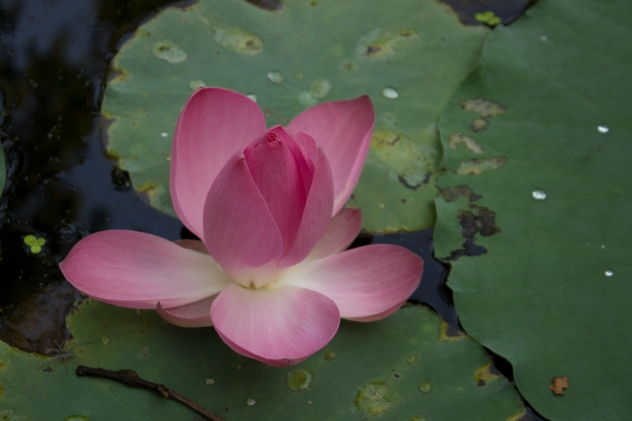By Dr Berengere Berieau
In the classic texts, the year is divided into 6 rutus or seasons, highlighting the changes in climate and environment. There are Shishira (late winter), Vasanta (spring), Greeshma (summer), Varsha (rainy season), Sharat (automn), Hemanta (early winter). These 6 rutus are divided into 2 groups based on features of each climate changes and their effect on the body: Adaanakaala and Visargakaala.
Adaanakaala indicates the ascent of the sun, moving to the Northern hemisphere. During this period, the sun becomes stronger and takes away the strength of the beings. Shishira, Vasanta and Greeshma rutus together form this Adaanakaala. The intensity of the sun and the dry wind reduce the strength and resistance in the body. The dryness absorbs the moisture from the earth, the predominant tastes are bitter, pungent and astringent, leaving the body drier and reducing the stamina.
Visargakaala indicates the descent of the sun or the movement of the sun to the southern hemisphere. This movement brings back the strength into the body. Varsha, Sharat and Hemanta are the seasons of this period. The winds are not dry anymore, the moon becomes more powerful, the heat on the earth is taken away by the heavy clouds, rain and fresh wind. Unctuousness sets in the atmosphere and sweet, sour and salty tastes are predominant, all these giving strength back into the body.
Varsha rutu or rainy season starts in Tamil Nadu around October 15th. During this period, the land is moist with rain, bringing back the water the vegetation needs to grow again. During this period the medicinal plants have less potency, due to the excess of water. The coldness and moisture in the atmosphere decreases the digestive fire which further leads to improper digestion, acidity, bringing an accumulation of Pitta (liquid, sour, fluid, strong smell characteristics are increased in the body). Vata gets particularly aggravated during this season due to the cold moisture, giving pain in all the joints and an irregular digestion. Due to Adaanakaala, the body comes from a harsh season, summer, where the rays and heat of the sun have sucked the energy away, leaving the body weakened in its energy and immune system.
Main aim for the season: Increase Agni (digestive power)
Aahaara – Dietary tips:
Agni is naturally weak after the summer. It is needed to rebuild a proper appetite/hunger otherwise Pitta disturbances may occur (if the fire is not strong, it will create fermentation in the body affecting the digestive tract, bowel movements and mental stability). What to take?
- Warm, cooked nourishing food, raw food should be a side-dish only
- Favorable tastes: Madhura (sweet), Amla (sour), Lavana (salty)
- Examples of proteins: from animal kingdom (chicken, fish, eggs), from vegetable kingdom (green gram-moong dal, nuts and seeds)
- Examples of items for energy: old cereals (rice, oats, wheat)
- Vegetables: pumpkin, bittergourd, bottlegourd, aubergine, spinach and greens, cabbage, carrots, beetroots
- Fruits: pomegranate, banana
- Beverages: honey, jaggery preparations, warm water, arishtam
- Spices: ginger, black pepper, turmeric, cumin, clove, cinnamon, fennel and fenugreek seeds
Vihaara – Daily and seasonal routine:
Due to a weak digestive fire and a humid environment, the body has the tendency to absorb the moisture and has difficulty to keep warm.
- Abhyanga (body massage), Moordhatailam (head massage), Vimardana (deep tissue massage with upward movements), Padaabhyanga (foot massage), all followed by Swedana therapy (fomentation) with sauna or steambath or hot water shower.
- Snaana: bath with hot water and a paste made with chickpea flour to remove the excess of oil and smoothen the skin
- Keep the body warm from head to feet (covering specially the head, ears and feet).
- Regular exercise: at least 30 minutes per day, cardio exercise, martial art exercise, yoga
- Dhumapaana (fumigation) with eucalyptus leaves or agaru bark
- Nasya: drops of Anu Tailam in both nostrils
Avoid:
- Afternoon nap, physical exertion
- Sunbath
- Humid cold air



Bonjour Bérengère,
Je t’ai envoyé un mail à ton adresse be.berieau@gmail.com. N’ayant pas de réponse, je me demande si tu l’utilises toujours. Je voulais donner tes coordonnées à des dames françaises qui viennent à Pondicherry et qui souhaitent faire une cure.
J’espère que tu vas bien. Bonne Année !
Bises, Myriam
LikeLike